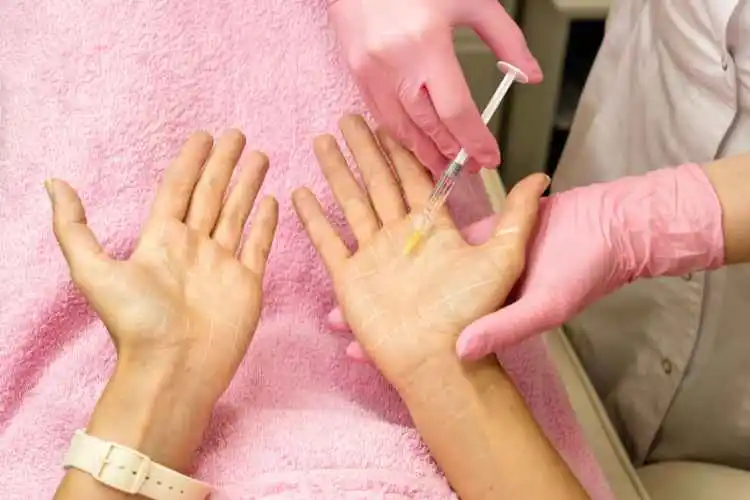You’re in a social gathering, the room is buzzing with laughter, and you’re engaged in conversation. Suddenly, you notice it – those embarrassing sweat stains on your shirt, damp palms, or even damp socks. Hyperhidrosis, often referred to as excessive sweating, can be more than just an inconvenience; it can significantly impact your confidence and daily life. So, in this article, you may explore the causes, symptoms, and various treatment options for hyperhidrosis while shedding light on the relationship between excessive sweating and skin chafing.
Understanding Hyperhidrosis: It’s More Common Than You Think
First things first, let’s demystify hyperhidrosis. It’s not a rare condition, and it affects countless individuals worldwide. Hyperhidrosis is characterised by uncontrollable and excessive sweating that goes beyond what’s necessary for temperature regulation. It can manifest in various areas of the body, including the armpits, hands, feet, face, or even the whole body.
The Causes
The precise causes of hyperhidrosis remain a topic of research and debate, but it often stems from an overactive sympathetic nervous system. This system controls various bodily functions, including sweating. Genetics can also play a role, as hyperhidrosis tends to run in families.
Recognising the Symptoms
While sweating is a natural and vital bodily function, those with hyperhidrosis experience it on a different level. The symptoms often include:
Visible Sweat: Profuse sweating, even in cool or non-stressful situations.
Frequent Chafing: The constant moisture on the skin can lead to skin chafing, irritation, and discomfort.
Social Anxiety: The fear of visible sweating can lead to social anxiety, affecting one’s confidence and social interactions.
Impact on Daily Life
Hyperhidrosis isn’t just about the inconvenience of excessive sweating; it can profoundly impact daily life. Simple activities like shaking hands, writing with a pen, or wearing certain clothing become daunting tasks. The constant moisture can also result in chafing, leading to painful and irritating rashes.
Exploring Treatment Options
The good news is that there are effective treatment options available to help manage hyperhidrosis:
Antiperspirants: Over-the-counter or prescription-strength antiperspirants can help reduce excessive sweating. They work by blocking sweat ducts temporarily.
Iontophoresis: This non-invasive therapy involves using a device that passes a mild electrical current through the skin. It’s particularly effective for treating sweaty hands and feet.
Botox Injections: Botulinum toxin injections can block the nerves that trigger sweat glands, providing relief for several months.
Medications: In some cases, medications like anticholinergics may be prescribed to reduce sweating.
Surgery: For severe cases, surgical options such as sympathectomy or sweat gland removal may be considered.
The Link Between Hyperhidrosis and Chafing
Excessive sweating, a hallmark of hyperhidrosis, can lead to skin chafing. When the skin remains constantly moist, especially in areas prone to friction like the underarms or inner thighs, it becomes vulnerable to chafing. This can result in redness, discomfort, and even painful rashes. Therefore, managing hyperhidrosis not only addresses the issue of excessive sweating but also helps alleviate the associated chafing.
In conclusion, hyperhidrosis is a common condition that can significantly impact one’s quality of life. Excessive sweating poses physical challenges and can lead to social anxiety and discomfort due to skin chafing. However, with a range of effective treatment options available, regaining control over hyperhidrosis is within reach. So, if you find yourself struggling with excessive sweating and its accompanying challenges, don’t hesitate to seek professional advice. Whether it’s antiperspirants, iontophoresis, Botox injections, medications, or surgery, there are strategies to help you embrace a sweat-free life and regain your confidence and comfort. Remember, you’re not alone in this journey, and there’s a path to relief and improved well-being.

